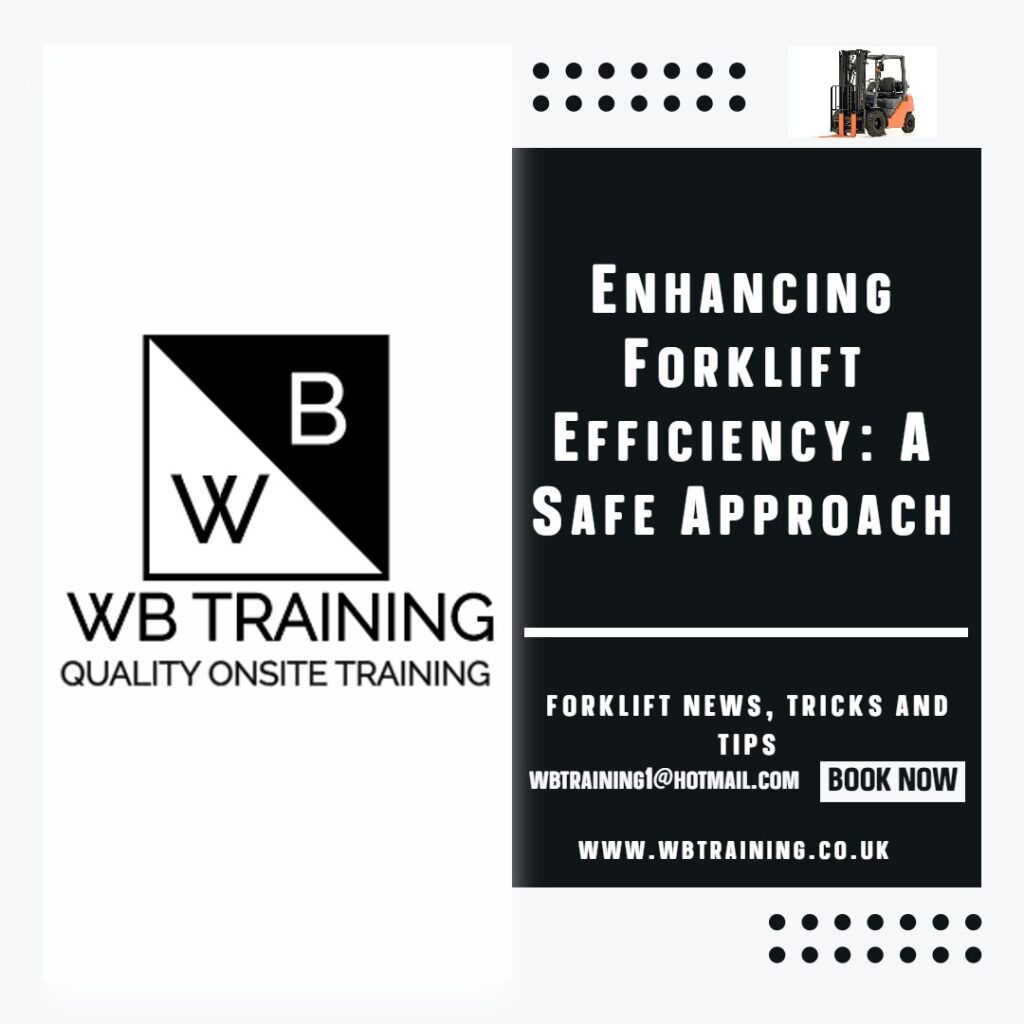Enhancing Forklift Efficiency

In the fast-paced world of material handling and logistics, efficiency is key to maintaining competitiveness and meeting customer demands. Forklifts, as versatile workhorses of warehouses and industrial facilities, play a pivotal role in streamlining operations. However, while improving efficiency is crucial, it should never come at the expense of safety. In this blog post, we’ll explore strategies for enhancing forklift efficiency while prioritizing safety, ensuring a harmonious balance between productivity and well-being in the workplace.
Understanding the Relationship Between Efficiency and Safety
Efficiency and safety are not mutually exclusive concepts—in fact, they are intricately interconnected. While boosting efficiency can lead to increased productivity and cost savings, neglecting safety measures can result in accidents, injuries, and downtime, ultimately undermining efficiency gains. Therefore, achieving optimal efficiency requires a holistic approach that integrates safety considerations into every aspect of forklift operations.
Equipment Maintenance and Upkeep
One of the fundamental pillars of forklift efficiency is ensuring that equipment is well-maintained and in optimal working condition. Regular inspections, preventive maintenance checks, and timely repairs are essential to prevent breakdowns and maximize uptime. From checking fluid levels and tire pressure to inspecting hydraulic systems and brakes, proactive maintenance practices not only prolong the lifespan of forklifts but also contribute to smoother and safer operation.
Operator Training and Proficiency
Efficient forklift operation hinges on the skills and proficiency of operators. Comprehensive training programs that cover both theoretical knowledge and practical skills are crucial for ensuring safe and efficient forklift operations. Operators should be familiar with proper load handling techniques, maneuvering in tight spaces, and navigating challenging terrain. Ongoing training and refresher courses help reinforce best practices and keep operators up-to-date with the latest safety protocols and regulations.
Optimization of Workflow and Layout
Efficiency gains can also be achieved through strategic optimization of workflow processes and facility layout. By analyzing material flow patterns, minimizing travel distances, and optimizing storage configurations, organizations can streamline forklift operations and reduce idle time. Implementing technologies such as warehouse management systems (WMS) and real-time location tracking enables better coordination and synchronization of tasks, leading to improved efficiency without compromising safety.
Use of Ergonomic Accessories and Attachments
Investing in ergonomic accessories and attachments can enhance both efficiency and operator comfort. Attachments such as side-shifters, fork positioners, and telescopic booms enable forklifts to handle a wider range of loads with greater precision and efficiency. Additionally, ergonomic features such as adjustable seats, lumbar support, and ergonomic controls reduce operator fatigue and contribute to a safer and more comfortable working environment.
Cultivating a Culture of Safety and Continuous Improvement
Ultimately, sustainable improvements in forklift efficiency can only be achieved within a culture that prioritizes safety and embraces continuous improvement. Encouraging open communication, empowering employees to report safety concerns, and recognizing and rewarding safe behaviors foster a positive safety culture. Regular safety audits, feedback sessions, and performance evaluations provide valuable insights for identifying areas of improvement and implementing corrective actions.
Conclusion
Improving forklift efficiency is not merely about working faster or cutting corners—it’s about working smarter while safeguarding the well-being of everyone in the workplace. By integrating safety considerations into every aspect of forklift operations, from equipment maintenance and operator training to workflow optimization and ergonomic design, organizations can achieve sustainable gains in efficiency without compromising safety. Together, let us strive to create a workplace environment where efficiency and safety go hand in hand, ensuring a prosperous and secure future for all.
